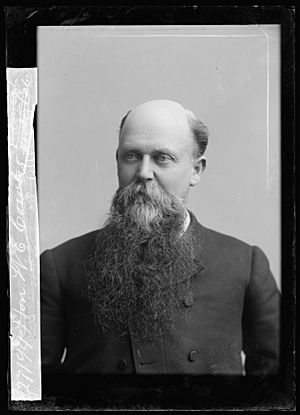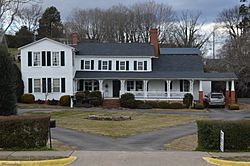William H. H. Cowles facts for kids
William Henry Harrison Cowles (born April 22, 1840 – died December 30, 1901) was an important politician from North Carolina. He was a member of the Democratic Party. Cowles served four terms in the United States House of Representatives, which is part of the U.S. Congress.
Early Life and Military Service
William H. H. Cowles was born in Yadkin County, North Carolina. When he was older, he joined the Confederate States Army. This was during the American Civil War, a big war in the United States.
In 1861, he joined the 1st North Carolina Cavalry Regiment. By the end of the war, he had become a lieutenant colonel. This is a high rank in the army.
Cowles fought under a famous general named Jeb Stuart. He even led Stuart's rear guard, which protects the back of the army. After General Stuart died in 1864, General Wade Hampton took command. Cowles stayed with Hampton until he was captured at Petersburg when the war ended. He was hurt twice during his time in the war.
Law and Political Career
After the war, Cowles went to Richmond Hill Law School. He then moved to Wilkesboro and started working as a lawyer.
From 1874 to 1878, Cowles was elected as a solicitor. A solicitor is like a district attorney. They are a lawyer who represents the government in court cases. He worked for the 10th judicial district in North Carolina.
In 1884, he was elected to the 49th United States Congress. He was a Democrat. He was re-elected three more times, serving a total of four terms. He decided not to run for a fifth term.
While in Congress, Cowles led two important committees. He was the chairman of the Committee on Expenditures in the Department of Justice. He also chaired the Committee on Mines and Mining.
Family and Legacy
William H. H. Cowles had family members who also became involved in politics. His nephew, Charles H. Cowles, became a Republican Congressman. His granddaughter, Lura S. Tally, became a Democratic state Senator in North Carolina.
His home and law office in Wilkesboro are historic buildings. They were added to the National Register of Historic Places in 1982. This means they are important places to American history.



